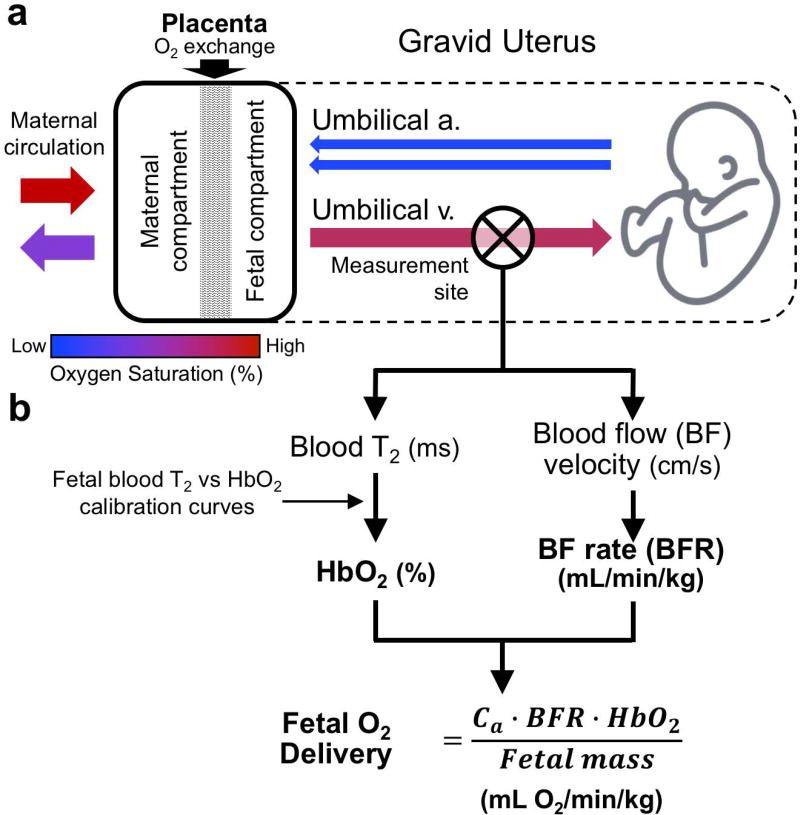Figure 1.
(a) Schematic of oxygen transport between maternal and fetal circulation. Maternal arterial circulation delivers highly oxygenated blood to the placenta, however, maternal and fetal blood are never in direct contact. O2 diffuses from the maternal to the fetal compartment and is delivered to the fetus via the umbilical vein (UV). After O2 extraction deoxygenated blood returns to the placenta via umbilical arteries, where carbon dioxide and waste products diffuse to the maternal compartment and are removed by the maternal venous system. Fetal O2 delivery rate may be used as means to evaluate placental function and (b) is estimated as the product of the oxygen carrying capacity of hemoglobin (Ca), hemoglobin (Hb) concentration, blood flow rate (BFR) and oxygen saturation (HbO2) at the UV, normalized by fetal mass. All of the above parameters can be determined via quantitative MRI methods.

